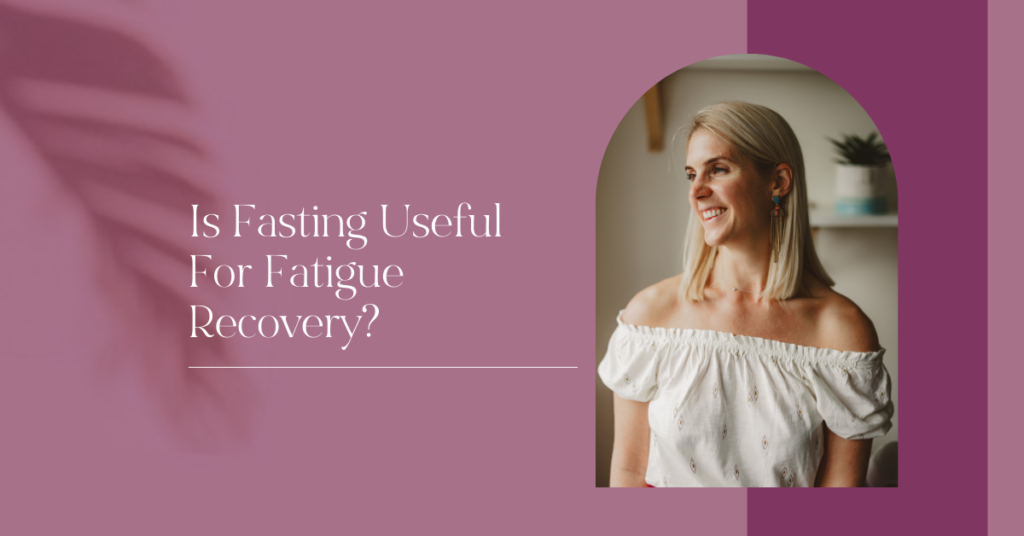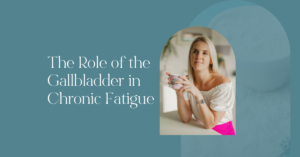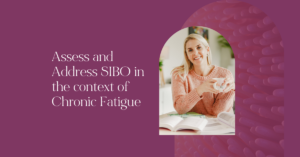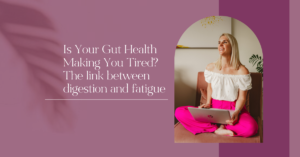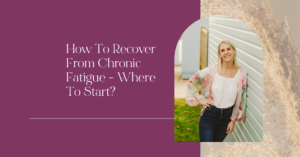Fasting, in simple terms, is not eating for periods of time. If you are wondering whether this could be helpful if you struggle with chronic fatigue, CFS/ME or another chronic illness, the answer is: it depends.
Can fasting be a useful tool in fatigue recovery? Absolutely yes!
Can it be detrimental when used inappropriately for the individual? Also yes.
Therefore, the goal here is to help you understand the nuance and whether or not it could be appropriate for you.
We will also look at different types of fasting, how you can begin to use fasting as part of your daily and weekly routine – even if you have never fasted before – and other pieces of information that will help you capitalise on the benefits of fasting.
Types of Fasting
Fasting is essentially not eating for a period of time. Most of us will do a daily overnight fast between the time of our last meal or calorie intake of the evening (which includes calorific drinks e.g. mug of hot milk) and our first meal or calorie intake the next day.
This overnight fast is often referred to as “time restricted feeding”, i.e. when our meals are restricted to a specific time frame. The recommendation is to have at least 12 hours between our last meal of the evening and first meal of the next day, although this may not always be appropriate if someone experiences hypoglycemia for example.
We can extend this window to make our overnight fast 14 hours, 16 hours or in some cases 18 or 24 hours. This is what may be referred to as “Intermittent Fasting”.
In my own fatigue recovery journey I, Anna, used intermittent fasting daily and in some cases I even dabbled with 36 hour and 42 hour fasts.
Benefits of Fasting in Fatigue Recovery
Metabolic Function
Fatigue is the end result of an inability to produce enough energy currency, in the form of adenosine triphosphate (ATP), to meet one’s needs. There are multiple different mechanisms by which ATP production is affected and poor metabolic health is one of those mechanisms. A healthy and robust metabolic system will allow for more efficient ATP production and therefore, better energy.
Metabolic dysfunction is something we screen all our clients for. This might be looking at blood markers such as HB1AC, fasting glucose, triglycerides and cholesterol or post-prandial glucose monitoring.
A pattern of metabolic dysregulation may look like:
- Hb1Ac > 36mmol/mol
- Elevated fasting glucose >7 mmol/L
- Elevated triglycerides >1.7 mmol/L
- 2 hour postprandial glucose above 5.5 mmol/L
- Triglycerides / HDL > 3
- Energy crashes after eating
- Sugar cravings
- Inability to miss a meal or needing to eat every 2-3 hours
- Disturbed sleep
- Waking with poor energy
- Sugar cravings after meals
If someone presents with this pattern they may have some degree of insulin resistance which means they are not able to get energy into their cells, which means they cannot make ATP as efficiently. Fasting can be a useful tool that lowers insulin and improves glucose uptake into all body cells, including the brain.
This reduction in insulin may have additional benefits of lowering inflammation, lowering blood pressure and water retention and positively impacting histamine in those affected by histamine intolerance and mast cell activation syndrome (MCAS).
Fasting and Cognitive Function
Chronic immune dysregulation downregulates GLUT-1 receptors at the blood brain barrier. GLUT-1 are responsible for transporting glucose from the bloodstream to the brain. A reduction in GLUT-1 means less energy to your brain, fatigue, brain fog and other related symptoms.
Structured food avoidance, for example, time restricted feeding, when meals are restricted to a narrower window, reduced meal frequency, eating less meals per day, or extended fasts, for example, 24 or 42 hour fasts encourage low glucose availability.
Low glucose availability increases GLUT-1 receptors and therefore the transport of glucose across the blood brain barrier. This can offer positive benefits such as better mental alertness, clarity and energy.
Autophagy
Fasting upregulates a cellular process known as autophagy. Autophagy is made up of the words auto (self) and phagy (eating). It refers to the process by which a cell will cannibalize some of its own parts in a continual clean-up process that keeps it functioning in a healthy way. You can think of it as taking out the “cellular trash”. As a result, cell function improves. Healthy cells allow for a healthy functioning body and mind.
Research suggests that defects in autophagy regulation are associated with poor cellular health and disease, including neurodegenerative diseases, cancer, pathogen infection and metabolic diseases.
Upregulating the natural cellular process of autophagy may therefore have benefits in metabolic health, neurodegeneration, energy production, relieving the cellular toxic burden, reducing inflammation and promoting longevity.
Autophagy can be induced when cells sense stress signals such as heat stress (using a sauna), cold stress (cryo-therapy), fasted exercise, resistance training or certain autophagy-boosting foods.
Approaches such as fasting, calorie restriction and the ketogenic diet create nutritional stress which can induce autophagy.
Fasting and Cortisol
Based on what has already been discussed, it seems like there are a lot of positive benefits to fasting. However, it is important to note that fasting falls into the category of “Hormetic Stressors”.
Hormetic Stressors are stressors that, when applied in the appropriate dosage, create a small inflammatory response in the brain that creates an anti-inflammatory response in the rest of the body. This is why fasting can be supportive for inflammation and the immune system.
This anti-inflammatory response relies on a healthy hypothalamic-adrenal-pituitary (HPA)- axis. Which means it relies on the fact that the brain (hypothalamus and pituitary) can talk to the adrenal glands – the small glands located above our kidneys – and that the adrenal glands can produce the stress hormone cortisol.
Cortisol is an anti-inflammatory hormone, hence responsible for the anti-inflammatory hormetic effect. It is also an energy liberating hormone. It is through the release of cortisol that we can liberate stored energy, in the form of liver glycogen and body fat, into circulation. This keeps blood sugar stable when we don’t have access to food or when we might voluntarily choose to fast.
In summary, fasting will ask the HPA-Axis to work a little harder which might not be a problem in someone with healthy adrenal function. However, there are some situations in which it may not be appropriate to fast, given the state of someone’s HPA-axis and blood sugar regulation. People with poor HPA-axis regulation and / or adrenal dysfunction may been more prone to hypoglycemia (low blood sugar).
Who Should Not Fast?
The goal, at least in the early stages of fatigue recovery, is stability. This means stable routines, stable sleep and wake cycles, nervous system stability, stable blood sugar and stable meals times.
Fasting may be a destabilising factor which means the individual needs enough capacity in their system to handle the instability. Therefore, it comes later in the fatigue recovery process, if at all.
Here are some clues that fasting may not be appropriate for you:
- Your blood sugar swings from very high to very low
- You are prone to hypoglycemia (low blood sugar)
- You are prone to low cortisol, which often presents as hypoglycemia
- You eat erratically; you miss meals and your meals are not well balanced
- You are prone to high cortisol and heightened sympathetic activation
- Your movement routine is not yet stabilised; you still experience frequent boom and crash cycles and post-exertional malaise
- You experience an increase in energy and cognitive function after meals
- You need to eat every 2-3 hours
- You experience frequent waking in the night
If you resonate with the symptoms described above the important actions to take will be:
- Stabilise meals
- Eat as frequently as necessary to prevent hypoglycemia
- Use blood glucose monitoring for fine tuning
- Support your nervous system (ideally join Nurturing Resilience)
- Work with a practitioner who can support you with low or high cortisol levels
How to Introduce Fasting?
When I’ve shared about my fasts on instagram, I often get comments from people who don’t think it is something they could ever do, even if they wanted to. The reality is, it’s not that hard and many people are able to fast, provided they build up in a structured way.
The starting point is always to achieve stability in food intake and blood sugar control and then gradually narrow the feeding window.
What does this look like practically?
Step 1 – Stabilise
Do the blood sugar monitoring work to establish a routine of meal frequency, quality and quantity that works for you. It might be easier to implement fasting alongside a ketogenic or low carbohydrate diet and therefore this might be your first step. Learn more here.
Step 2 – Consistency
Do it consistently – it is often easy to know what to do, doing it consistently is a very different thing. You want to feel in a good routine with your diet before you make any adjustments or changes. This includes knowing what foods work well for you, the size of meals that suit you, the timing of meals in the day and around physical activity and how many times a day that you need to eat to feel at your best.
Step 3 – Extend
Once you have a consistent routine that works for you, start by increasing your fasted hours. For example, if you eat all your meals in a 12 hour time restricted feeding window could you adjust this to a 14 hour window or a 16 hour window.
Usually, as you shorten your feeding windows you will also need to adjust your meals. You may need to eat a little more earlier in the day and cut out snacks or even just eat twice a day.
We usually find anywhere between a 12 to 16 hour fasted window works well for women. Some people may prefer up to 18 or 20 hours daily, but the majority will probably be around 12 to 16 hours. This might vary depending on your menstrual cycle. Women who still have a cycle, may find that they can do longer fasts (e.g. 18 to 20 hours) in the follicular phase and shorter fasts in the luteal phase (12 to 14 hours).
There can be a lot of advice online about the ideal time to fast depending on your menstrual cycle but I recommend that you do what works best for you. I personally find I am more hungry in the follicular phase and feel less hungry in the luteal phase, therefore longer fasts work better for me after ovulation, provided I am not too close to the end of my cycle.
Remember, not everyday needs to be the same. Listen to your body and honour the need to eat. Some days you may only have a 12 hour time restricted feeding window, other days may be 20. Being flexible and adaptable is a sign of health.
Step 4 – Extend Further
Once you’ve established a good intermittent fasting routine, you could then explore a weekly or bi-monthly 24 hour+ fast.
Ease into this gradually. For example, if your current longest fast is 16 hours, pick a day to do an 18 hour fast, then a few weeks later perhaps try a 20 hour fast and so on and so on.
When fasting for 24 hours what can work quite well is having an early evening meal (4pm or 5pm) and then fasting until the same time the next day. This means that you don’t have to go to bed hungry.
When you are just starting out, you can do what is known as a “dirty fast” where you consume coffee with a tbsp of cream or coconut cream or drink a stock cube with some water like a soup. For the most part this helps as a psychological break, caffeine can suppress appetite and stock cube can top up on sodium which is often lost during fasting.
Step 5 – Go longer!
Once you have done a 24 hour fast you could push yourself a little longer and do a 36 or 48 hour fast.
For a 32 hour fast you could have a later dinner (e.g. 8pm) on day 1 and do your first 24 hours. At this point I like to have a stock cube mixed with water or even just ½ an avocado with salt and lime as a psychological break. Then continue for another 12 or 24 hours or anywhere in between.
A tablespoon of C8 oil before bed may help you sleep better if you tend not to sleep so well in a fasted state.
Breaking Your Fast
It is important to break your fast in a sensible way. After a period of extended digestive rest the digestive system may need a gentle reintroduction to food. Mashed avocado, scrambled eggs, a mug of bone broth or a cup of vegetable soup may be a good start.
I like to eat a very balanced meal that I can fully enjoy after not eating for 24+ hours. This might be a plate of salmon with veggies and avocado. Eat a regular sized meal so that you do not overwhelm your digestive system. I normally aim for about 800 calories when completing a 24 hour fast and then I won’t eat again until the next day.
To fully reap the benefits of the fast, aim to eat well and consistently for a few days afterwards. I normally notice improved insulin sensitivity, blood sugar regulation and blood ketones for several days after fasting, provided I eat well.
Electrolytes and Your Fast
Fasting or even a low carbohydrate diet lends itself to lower circulating levels of insulin, the hormone that rises after a meal to manage sugars entering the bloodstream. Electrolytes are minerals that have an electric charge. These include calcium, potassium, magnesium, chloride, and sodium, the levels of which are regulated by the kidneys. As insulin levels reduce this can cause the kidneys to excrete electrolytes, specifically sodium, and water.
This is one of the beneficial mechanisms by which blood sugar and insulin management can be healthful for low blood pressure. However, loss of electrolytes can also be associated with some of the symptoms of what is colloquially known as the “keto flu”. These symptoms may include headaches, nausea, drowsiness, fatigue and low energy.
If fasting or entering into a state of ketosis it is important to keep sodium levels topped up. When fasting, you can use fasting salt, a sugar free electrolyte supplement, stock cubes mixed with hot water or just add organic pink Himalayan sea salt to a glass of water. You can always mask the flavour by squeezing in the juice of half a fresh lime. This will contain a tiny amount of carbohydrate but not enough to offset the benefits of your fast.
If you notice yourself feeling tired, weak, dizzy or experiencing symptoms of dehydration, like dry lips, take a drink of water with a generous pinch of salt or an electrolyte supplement.
Here are some of my favourite sugar free electrolyte options:
These electrolytes are available on amazon.
Alternatively you can take LMNT (US) or Repowr (UK) which tastes really great and comes in convenient portion sized packets. Use the link for 10% off your Repowr Purchase.
Monitoring Blood Ketones and GKI
You don’t have to monitor your blood ketones when you fast but if you are a data geek like me it might be something that interests you.
You can assess blood ketones using a Keto Mojo (Use the link for 15% in the UK and EU) which is a finger prick device that will allow you to measure your blood glucose and blood ketones.
Keto Mojo also promotes a concept called GKI or Glucose Ketone Index. This is the ratio of glucose to ketones in your bloodstream calculated by dividing your glucose measurement in mmol/L by ketones in mmol/L. For example, if your blood glucose was 5 mmol/L and your ketones were 1mmol/L then your GKI score would be 5. They propose certain health benefits based on the level of ketosis achieved. See diagram below:
Conclusion
Fasting can be a powerful therapeutic tool for chronic fatigue and complex chronic illness when used under the right set of circumstances. When we work with clients we help them understand where they are in their fatigue recovery journey and what the most important actions are for their current presentation. Some of our clients do fasting and for others it isn’t the priority or the most important thing that will make the biggest difference. If you’d like help knowing the next steps in your fatigue recovery journey, you can find out more about working with us here.

